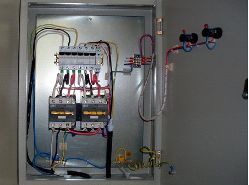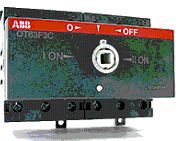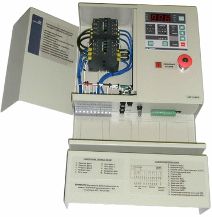Categories: Sharing experience, Autonomous power supply, Electrical connection of equipment
Number of views: 112419
Comments on the article: 8
The correct connection of the generator
 This article is more of a fact-finding and recommendatory nature and, perhaps, stopping someone from taking ill-considered actions, from the desire to independently connect the generator.
This article is more of a fact-finding and recommendatory nature and, perhaps, stopping someone from taking ill-considered actions, from the desire to independently connect the generator.
So, how to connect the generator? If you drive the phrase “How to connect the power station to the house” in Google, then you will get a link to the YouTube video, where the bearded uncle shows clearly what to do, in what order to connect, where to stick. Whether or not to follow his instructions for connecting the generator is a purely personal matter, but we would not recommend doing this, since this method is extremely dangerous for both the generator and others.
I will tell you one case from my own practice. In a nutshell about yourself, who I am and how I make money from bread))). I am engaged in the sale, installation and maintenance of generators.
When selling mini-power plants, we usually offer our customers such a service as connecting a generator to an existing house network. Depending on the wishes of the customer, we can install an automatic start system (ABP) or an ordinary cross over switch. Some agree, others refuse, referring to the fact that they themselves are with their hands.
It is about those comrade who with "hands and who all know how" will go further. So, after the sale of one of the generators, a couple of days later, a friend who purchased the generator called with claims that the generator did not want to generate 220 V. He asked me to come and deal with the generator.
Having visited a companion at the place of residence, looking at all the cable wires that were thrown to the generator, rummaging a little in the shield, quickly found out the cause of the generator's breakdown. Our friend connected the generator to the house exactly like a hero from a YouTube video, that is, using the socket-socket method, or the plug-plug, as you like.
The connection diagram of the electric generator is quite simple. In the event of a loss of city electricity, the input circuit breaker is turned off and the generator is connected to the nearest outlet, as a result, electricity is supplied to the whole house. As one friend whom I described the situation said, it’s the same as drinking vodka through ... jo *** enemaSorry, but you won’t say more precisely. And on one not very beautiful day, our hero somewhere mixed up something, as a result of which he got to repair the generator.
So, how to connect the generator correctly, so that the city network does not meet with the generator? There really aren't many ways.
 The easiest way is to connect the generator through a rocker switch or a switch to three positions - 1-0-2. Also, such switches are called reversible. An excellent example of this type of switch is the ABB reversing switch. Rather compact devices, mounted on a standard DIN rail.
The easiest way is to connect the generator through a rocker switch or a switch to three positions - 1-0-2. Also, such switches are called reversible. An excellent example of this type of switch is the ABB reversing switch. Rather compact devices, mounted on a standard DIN rail.
The next way to connect the generator is to use the simplest ABP with priority for city voltage. How ABP is arranged in this article we will not consider, we only note that ABP consists of two contactors required size, electromechanical protection, several circuit breakers.
The principle of operation of this ATS is quite primitive. The main electricity has disappeared - we start the generator - give some time to warm up - turn on the circuit breaker on the generator - the contactor closes - there is light in the house. When the city network appears - the generator contactor opens - the city contactor closes and there is light again in the house. We approach the generator and jam it.
If you wish, you can slightly improve the automatic transfer switch by adding several additional elements to the circuit, as a result of which we will get a semi-automatic automatic transfer switch.
Such ABP will work on a different principle. After the disappearance of the main electricity, we, as before, will have to go to the generator and start it, time relay, installed additionally, will give the necessary time to warm up the generator, and then turn on the generator contactor. After the appearance of city electricity, a switch to the city will occur, an additional relay will stop the generator.
 The third method is the installation of a full-fledged automatic generator control system (ATS). The principle of operation of a full-fledged ATS is somewhat similar to the operation of a semi-ATS described a little above, but in this case the ATS will independently start, warm up the generator, and then switch the load to a backup source of electricity (generator).
The third method is the installation of a full-fledged automatic generator control system (ATS). The principle of operation of a full-fledged ATS is somewhat similar to the operation of a semi-ATS described a little above, but in this case the ATS will independently start, warm up the generator, and then switch the load to a backup source of electricity (generator).
When electricity appears in the main network, the automation will transfer the load to the network and after a certain time stop the generator. It is also worth noting that in order for the generator to work in automatic mode, it must be equipped with an electric starter.
The main disadvantage of connecting the electric generator through the ABP is the cost of both the equipment itself and the installation work associated with the alteration of the mini-power plant to work with automation. It is quite difficult to independently connect automation to a generator without possessing the necessary skills.
In any case, if you are not an electrician, entrust the connection of the generator to specialists, and you will be happy)))
Sergey Seromashenko
See also at e.imadeself.com
:
